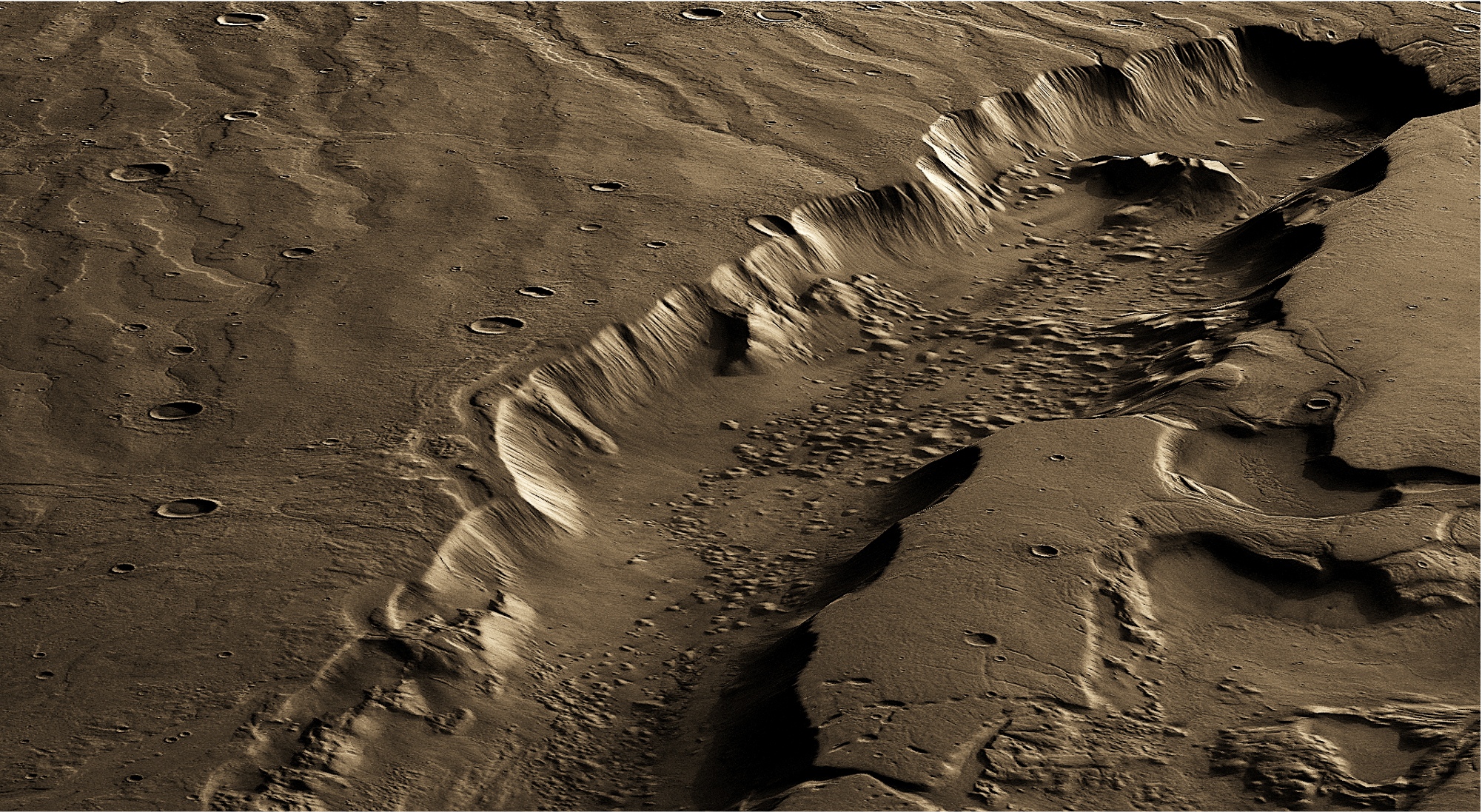
The Martian underground may have been habitable billions of years ago even if the planet's surface was a dry, frigid wasteland.
Mars likely churned out enough geothermal heat in the ancient past to melt the bases of thick ice sheets, generating large amounts of potentially life-supporting groundwater, a new study suggests.
The results could help scientists get a better handle on a decades-old mystery known as the faint young sun paradox. Four billion years ago, the sun was about 30% dimmer than it is today — too weak, seemingly, to support a continuously warm and wet Mars. Yet evidence of liquid water during that epoch abounds; NASA's Mars rover Curiosity, for example, has spent the last eight years exploring an ancient lake-and-stream system. Hence the paradox.
Water on Mars: The exploration and evidence
"Even if greenhouse gases like carbon dioxide and water vapor are pumped into the early Martian atmosphere in computer simulations, climate models still struggle to support a long-term warm and wet Mars," study lead author Lujendra Ojha, an assistant professor at Rutgers University-New Brunswick in New Jersey, said in a statement.
"I and my co-authors propose that the faint young sun paradox may be reconciled, at least partly, if Mars had high geothermal heat in its past," Ojha said.
He and his colleagues investigated whether the required internal heat — generated by the radioactive decay of elements such as thorium, potassium and uranium — did indeed flow during Mars' Noachian era, which lasted from about 4.1 billion to 3.7 billion years ago. The researchers focused their attention on the Martian southern highlands, a region that likely supported large ice sheets at the time.
Get the Space.com Newsletter
Breaking space news, the latest updates on rocket launches, skywatching events and more!
The team modeled the thickness, behavior and evolution of those ice sheets using a variety of datasets, including observations by NASA's Mars Odyssey orbiter, which has been studying the Red Planet since 2001. Odyssey carries a gamma-ray spectrometer, which has allowed scientists to map the abundance of thorium and potassium in the Martian crust.
The researchers determined that heat flowing from the Martian mantle and crust likely would have been sufficient to melt the bottom layers of thick ice sheets long ago, creating potentially habitable environments underground no matter what conditions may have been like on the planet's surface.
Just what the Noachian surface was like — primarily warm and wet or mostly cold and dry, with intermittent melting spurts — remains a topic of considerable debate. But it's widely accepted that Mars changed dramatically shortly after this era. The planet lost its global magnetic field, leaving its once-thick atmosphere vulnerable to stripping by the solar wind. Such stripping left the Martian surface cold, dry, radiation-blasted and seemingly uninhabitable, at least for Earth-like life.
But pockets of groundwater likely persisted, though they probably retreated to greater and greater depths as the surface dried out. Some of these Martian aquifers may even have survived to the present day.
"At such depths, life could have been sustained by hydrothermal activity and rock-water reactions," Ojha said in the same statement. "So, the subsurface may represent the longest-lived habitable environment on Mars."
The new study, which was published online today (Dec. 2) in the journal Science Advances, could have applications beyond the Red Planet. For example, the faint young sun paradox complicates our understanding of life's emergence on the early Earth, Ojha noted. Radiogenic heat may have played a large role in making our planet habitable long ago, he said.
Similar reasoning could apply to exoplanets as well. For example, some alien worlds that seem to orbit too far from their host star to support life may actually be habitable "by their own merit, by their own radioactive heat generation," Ojha told Space.com.
The new results don't fully resolve the faint young sun paradox: "This is a partial solution at best," Ojha said. He also stressed that the heat-flow numbers he and his team derived are somewhat uncertain, given that they come from elemental abundances. The researchers would love to extrapolate backward from actual measurements of Martian subsurface heat flow, he said, but no such data are available.
NASA's InSight Mars lander, which touched down in November 2018, carries an instrument that could gather such information — a burrowing heat probe nicknamed "the mole," which was designed to get at least 10 feet (3 meters) underground. So far, however, the Martian soil has stymied the mole's efforts, keeping the little digger stuck at, or just below, the surface.
Mike Wall is the author of "Out There" (Grand Central Publishing, 2018; illustrated by Karl Tate), a book about the search for alien life. Follow him on Twitter @michaeldwall. Follow us on Twitter @Spacedotcom or Facebook.
Join our Space Forums to keep talking space on the latest missions, night sky and more! And if you have a news tip, correction or comment, let us know at: community@space.com.

Michael Wall is a Senior Space Writer with Space.com and joined the team in 2010. He primarily covers exoplanets, spaceflight and military space, but has been known to dabble in the space art beat. His book about the search for alien life, "Out There," was published on Nov. 13, 2018. Before becoming a science writer, Michael worked as a herpetologist and wildlife biologist. He has a Ph.D. in evolutionary biology from the University of Sydney, Australia, a bachelor's degree from the University of Arizona, and a graduate certificate in science writing from the University of California, Santa Cruz. To find out what his latest project is, you can follow Michael on Twitter.









